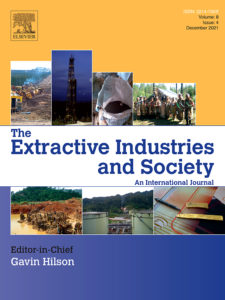Mining and urbanization: Ways of generating water insecurity in Andean territories
| Year | : | 2021 |
|---|---|---|
| Author/s | : | Gerardo Damonte, Julieta Godfrid, Ana Paula López |
| Area/s | : | Natural resources, extractive industries and social conflict |
Damonte, G., Godfrid, J. & López, A.P. (2022). Mining and urbanization: Ways of generating water insecurity in Andean territories. The Extractive Industries and Society 8(2).
Mining has historically facilitated urban growth, and water access in towns and cities has become one of the most prevalent and divisive of the unresolved problems surrounding mining. Urban areas in the vicinity of large-scale mining ventures endure chronic water shortages, and these areas often turn to remote water sources to meet their needs even partially. This article investigates how urbanization processes generated by mining developments have impacted water insecurity in Andean territories. To this end, we conduct a comparative analysis of water provision via two case studies that represent different urbanization models stemming from mining in Andean territories: the concentrated model observed in the Espinar case in Peru and the scattered model witnessed in Jáchal case in Argentina. Drawing on the water security concept, which considers the ways in which water is articulated, we argue that current mining developments generate urbanization processes that, despite the different models, reinforce water insecurity through the dimensions of power, culture, and visions of development. We follow a contextualized comparative case study method. Our analysis of the case studies draws on data collected through ethnographic instruments such as in-depth and semi-structured interviews, as well as public databases.






